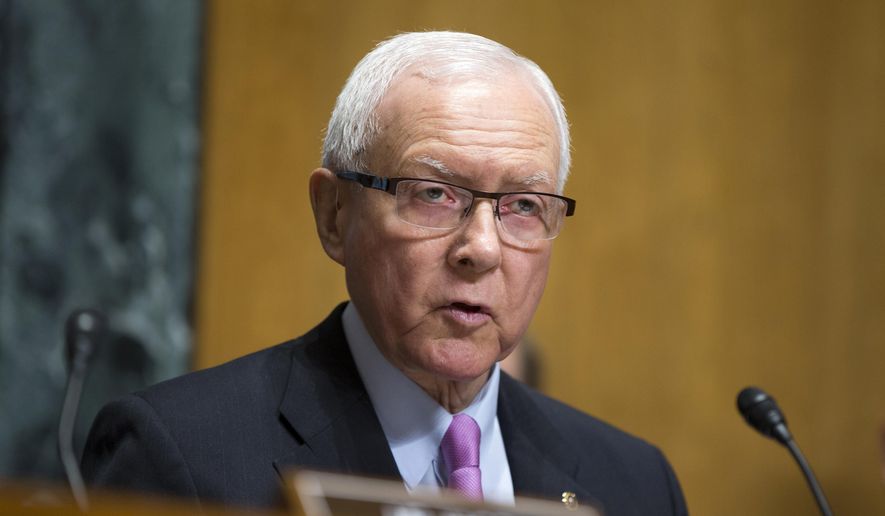Fake Obamacare enrollees were able to sign up for subsidized plans and to renew them for a second year, the government’s top watchdog reported Wednesday, exposing embarrassing holes and potential fraud in President Obama’s signature health care law.
The Government Accountability Office said 11 out of 12 fictitious applications it filed as a test were approved for plans on HealthCare.gov last year and were to have been paid a total of $30,000 in taxpayer handouts. All 11 were able to re-enroll automatically in their plans for this year, too, meaning the administration didn’t weed them out in the second full year of the health care exchange operation.
Exchange officials flagged six of the fake applications for termination this year, but GAO investigators were able to reinstate coverage for five of them anyway.
In one instance, the government did seem to detect something amiss and sent a threatening letter, but nothing happened. Coverage and tax credits continued, the investigators said.
“Not only does this negligence enhance the likelihood for abuse of taxpayer dollars, but it also calls into question the legitimacy of the health law’s enrollment numbers and challenges the integrity of the website’s security checks,” said Senate Finance Committee Chairman Orrin G. Hatch, Utah Republican.
It’s the latest black eye for the president’s health care law and for a federal bureaucracy reeling in scandals at agencies including the IRS, the Office of Personnel Management and the Department of Veterans Affairs.
It also fed Republican complaints that Mr. Obama was more interested in doling out benefits from his law than ensuring that the hundreds of billions of dollars at stake will go to the right people.
“Last year, this committee warned that weaknesses in HealthCare.gov could put billions of taxpayer dollars at risk, and the GAO undercover review has confirmed our concerns,” said House Ways and Means Committee Chairman Paul Ryan, Wisconsin Republican.
The Finance Committee is scheduled to hear more Thursday from Seto Bagdoyan, the GAO’s director of audit services.
The GAO said its experiences with fictional customers was “illustrative” but should not be used to generalize about the overall population of applicants and enrollees.
HealthCare.gov is a federal insurance portal that serves 37 states without their own health care exchanges. As of June, the administration counted 10.2 million paying customers in the Obamacare marketplace. About 8.7 million received tax credits, and 6.4 million of them used the federal portal.
The subsidies are paid directly to insurers to cover costs, and taxpayers are required to square up the details in their tax filings.
GAO investigators created the fake enrollees and gave them bogus documents including Social Security numbers, proof of income and citizenship. They proved to be “no barrier to obtaining taxpayer-funded credits,” Mr. Bagdoyan says in testimony prepared for Thursday’s hearing.
The Health and Human Services Department said its online verification systems thwarted the investigators’ initial attempts to enroll, and that applicants must attest to information they provide under the penalty of perjury.
It also said the GAO failed to reconcile tax returns for their fake enrollees, bypassing a key verification tool, and that more than 200,000 people have lost coverage because they could not prove their citizenship or legal residency.
“Over the last year, we have made continuous improvements to our processes and communications for those with a data-matching issue as we work to bolster the integrity of the process,” HHS spokeswoman Meaghan Smith said. “Independent reviews provide an additional check as we work with an array of stakeholders to make improvements as the marketplace matures.”
GAO auditors said the enrollment process was Kafka-esque at times. For instance, HealthCare.gov asked eight of its 11 successful applicants to provide additional documents proving citizenship and identity, but the list of suitable documents accompanying the challenge dealt with proof of income instead.
They also were told that they could re-enroll automatically for 2015 without doing a thing.
“But most of the applicants also received, to varying degrees, notices to reapply or to take some type of action,” Mr. Bagdoyan says.
“The message and frequency of these notices could create uncertainty among applicants who believed they need not take any action to remain enrolled,” his remarks say.
The GAO spoke with the administration’s document processing contractor and found that personnel “involved in the document-verification process are not trained as fraud experts and do not perform anti-fraud duties.”
Congressional Republicans are focusing on flaws and hiccups in Obamacare’s implementation as they mull their options for repealing the law through a fast-track budget tool known as reconciliation.
The Supreme Court dealt their plans a setback last month, holding in a 6-3 decision that the administration can continue to pay subsidies to customers in 34 states that use the federal exchange.
Mr. Obama said the ruling signaled that it was time to move on from partisan fights over the law. Republicans, however, said the GAO’s latest findings prove that the administration cannot be trusted.
“The administration spent billions of taxpayer dollars on a system that has yet to deliver on its core promises and, worse, continues to waste even more taxpayer dollars because it has yet to be fully functional,” said Fred Upton, Michigan Republican and chairman of the House Energy and Commerce Committee. “The American people deserve better.”
• Tom Howell Jr. can be reached at thowell@washingtontimes.com.




Please read our comment policy before commenting.